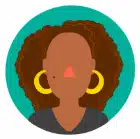Counting Dollars Using Place Value
Put your students’ knowledge of place value and skip counting to good use, as they learn to calculate the total value of $1, $10, and $100 bills.
Put your students’ knowledge of place value and skip counting to good use, as they learn to calculate the total value of $1, $10, and $100 bills.
By the time students have mastered these skills, they’ll have spent a lot of time looking at American currency. Why not invite them to dream up their own currency? This video explains the activity and can be used to inspire students to design their own currency and decide what it’s worth.

Eboni has extensive experience in curriculum development, with a focus on culturally-responsive and arts-based approaches. Having spent years creating academic content and providing professional development to teachers, she now curates themed playlists meant to provide educators with valuable, time-saving resources.
Search by standard, subject, grade, or publisher to quickly create a themed blended learning playlist with the Kiddom content library.
